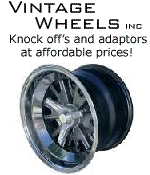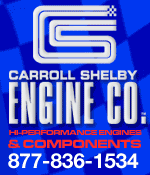Hi John......at 4.263 you're probably OK...and maybe even at 4.275...every block has it's own characteristics and potential to be sleeved or not to be sleeved.
My personal 427 has all eight hole sleeved....we have several reasons....I wanted to offset my bores to handle a larger exhaust valve diameter.....other blocks have problems like a crack or damaged hole from a piston or valve problem.....
The block has to have good solid material at the top and bottom of the bore to be sleeved effectively for street use.....we Hard Bloc (fill with Cement mixture) some FE's and the do the sleeve work....no water around the sleeve at all...so certainly no problem sleeving these application...
The outside diameter of your selected sleeve is important as is the careful and precise boring operation. Every sleeve is just slightly different on the OD by .0001 and to get a good fit we use Liquid Nitrogen to freeze the sleeves prior to installation...an image to view
http://www.gessford.com/images/nitrogen.gif
A good sized and very solid boring bar is helpful too!
http://www.gessford.com/images/1-2sleeveblk.gif
Pressure checking and even hot sealing the block can be a part of the process too
http://www.gessford.com/images/12pre...eckfeblock.gif
You might find this page interesting and it shows some images of the process we generally use at Gessford Machine....
http://www.gessford.com/images/FEPressurecheck.htm
Since we sleeve hundreds of holes a year from all sorts of applications it really help on the experience end when trying to save a block.....
sometime we have to fix fire slotted blocks where a racer has actually burned between the cylinders...after welding the area needing built up we would then sleeve these holes and bore the block.....sleeving just one hole can certainly effect the holes next to it...
Also a cam align bore check and block align bore check is in order after sleeving a block and most likely a surface job too...
Hope these thoughs answer some of your questions....
George


















 Linear Mode
Linear Mode



